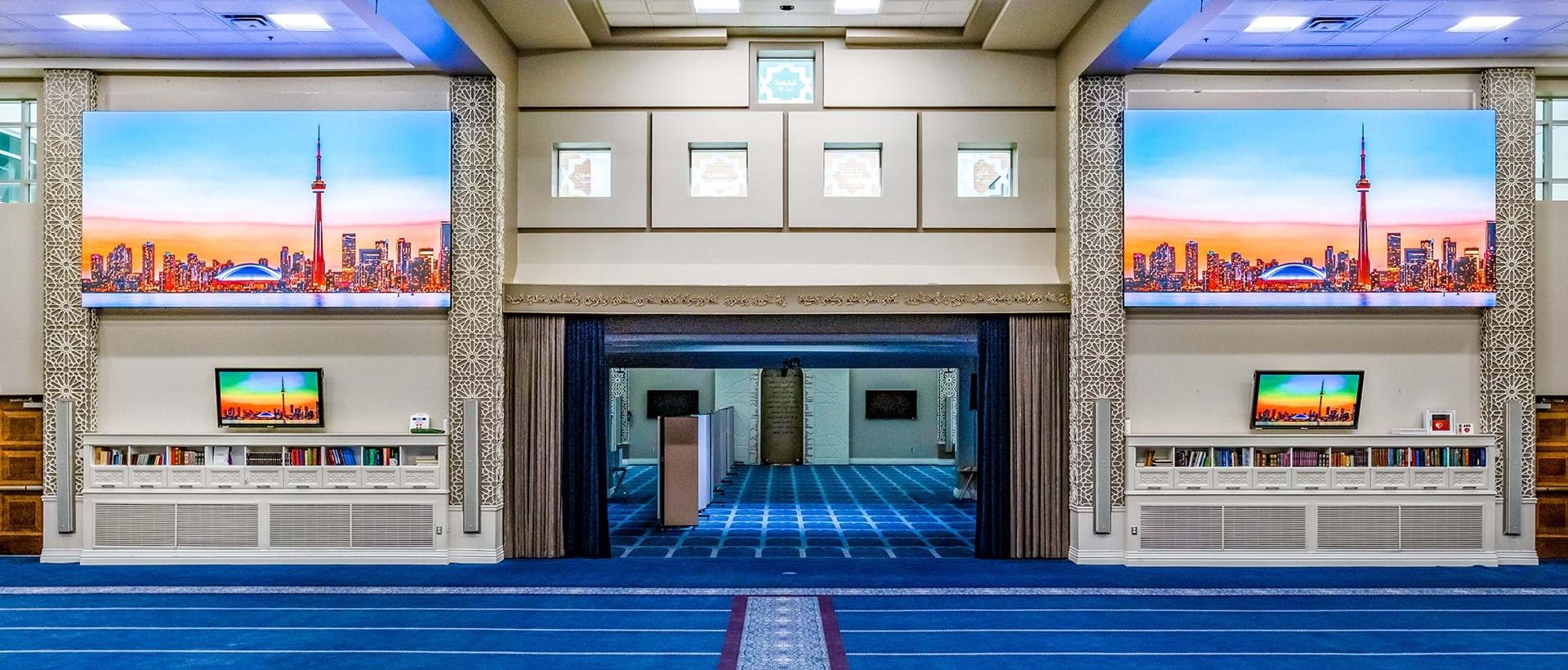
LED Mainstreamed: Toronto Mosque Puts Pair Of 217-Inch Displays In Main Prayer Hall
December 19, 2022 by Dave Haynes
More evidence that LED displays are now mainstream products: one of the larger mosques in the greater Toronto area has switched out aging, dim projection equipment for a pair of large all-in-one direct view LED displays in its main prayer hall.
The Jaffari Community Centre (JCC) is described as a Shia “161,000-square-foot multi-faceted facility that hosts cultural, religious, educational, athletic, recreational, and communal activities for its membership, providing opportunities for spiritual and intellectual growth.”
The prayer hall had a legacy projection system but changed that out for two nearly 16-foot-wide, 9-foot-high Planar MGP Complete 217-inch LED video walls, mounted above the main pulpit area. The pixel pitch is 2.5mm.
Using LED instead of projection, says a Planar brief, dramatically improves the visibility of displayed content and overcomes the large amount of natural and fluorescent lighting in the prayer hall. “With enhanced content clarity, text can be easily seen from anywhere in the space during prayer ceremonies.”
The displays were put in by Branch Audiovisual.
“Clarity of content is especially key,” says Syed Mahdi Rizvi, JCC audio visual team lead, in the brief, “for the Imam to meaningfully relate to the audience during religious sermons. Within the prayer hall, mounted PTZ cameras are used to relay a live feed of the Imam on the Planar MGP Complete LED video walls when he is speaking, allowing the crowd to see his face clearly.”
“There are many parts of the sermon that cater to the emotional wellbeing of the audience and the facial cues of the speaker are key in this regard,” Rizvi adds. “Being able to see a person’s expressions as they describe a scenario or tell a story is important for building that connection.”
The mosque regularly uses the LED video walls with prayer ceremonies to display text for people to follow along as they recite the prayers. They also occasionally show videos from other religious centers or display live streams from around the world. And whenever they can, they will show a sign language interpreter on a lower corner of the screens for the hearing impaired.
“Everything—even if it’s very text heavy—shows up nice and clear,” Rizvi says. “Before, we would hear things like, ‘The screens are not bright enough,’ or, ‘It’s too blurry,’ and now we don’t hear any of those concerns.”



Leave a comment